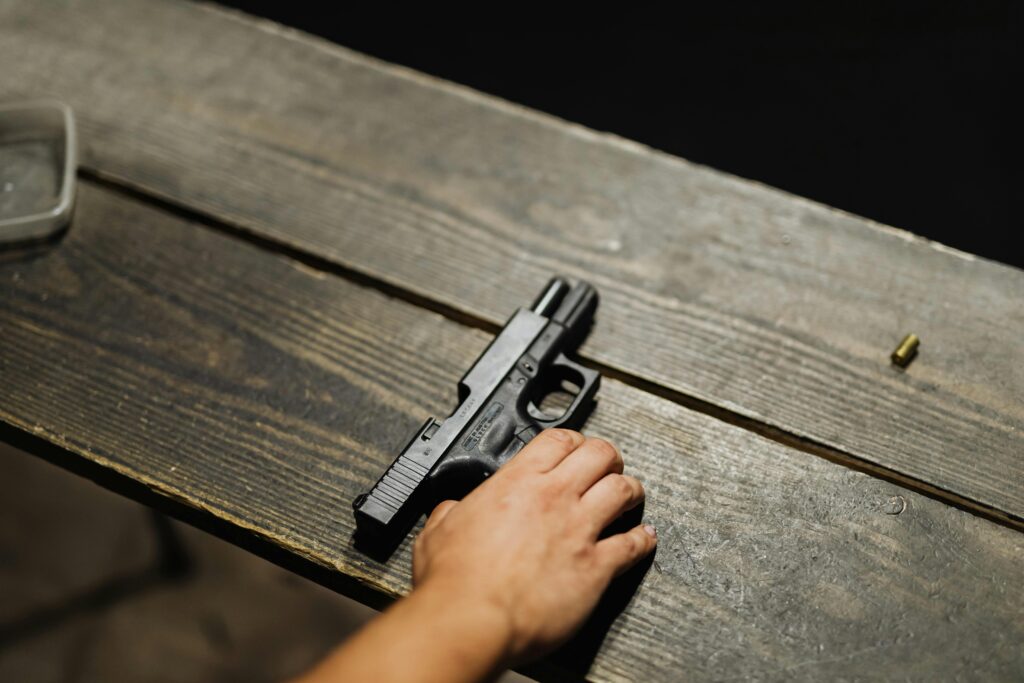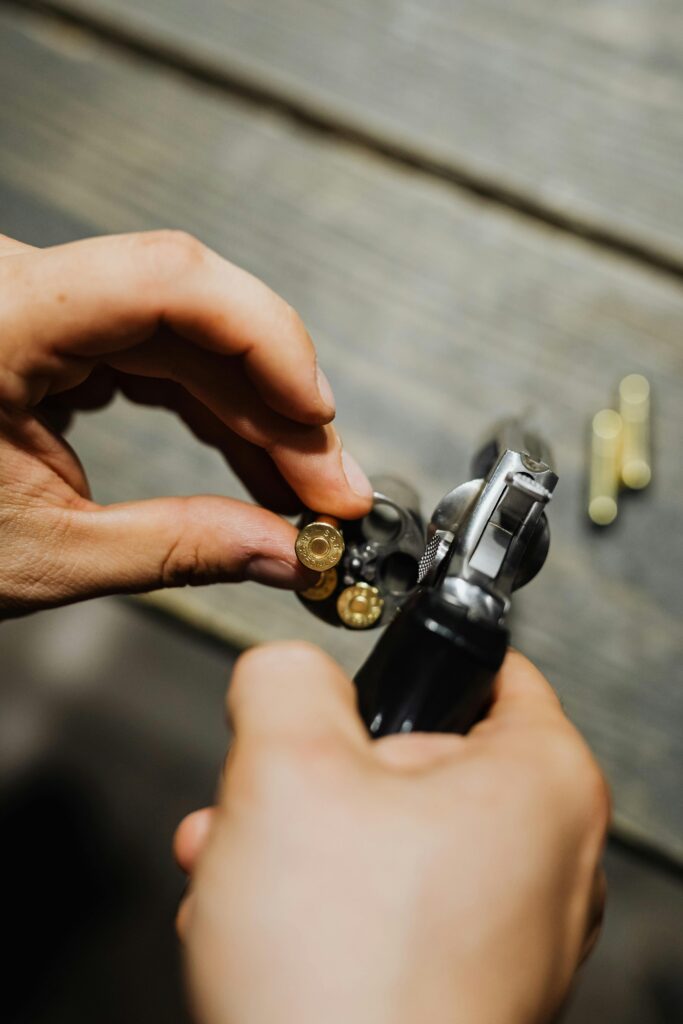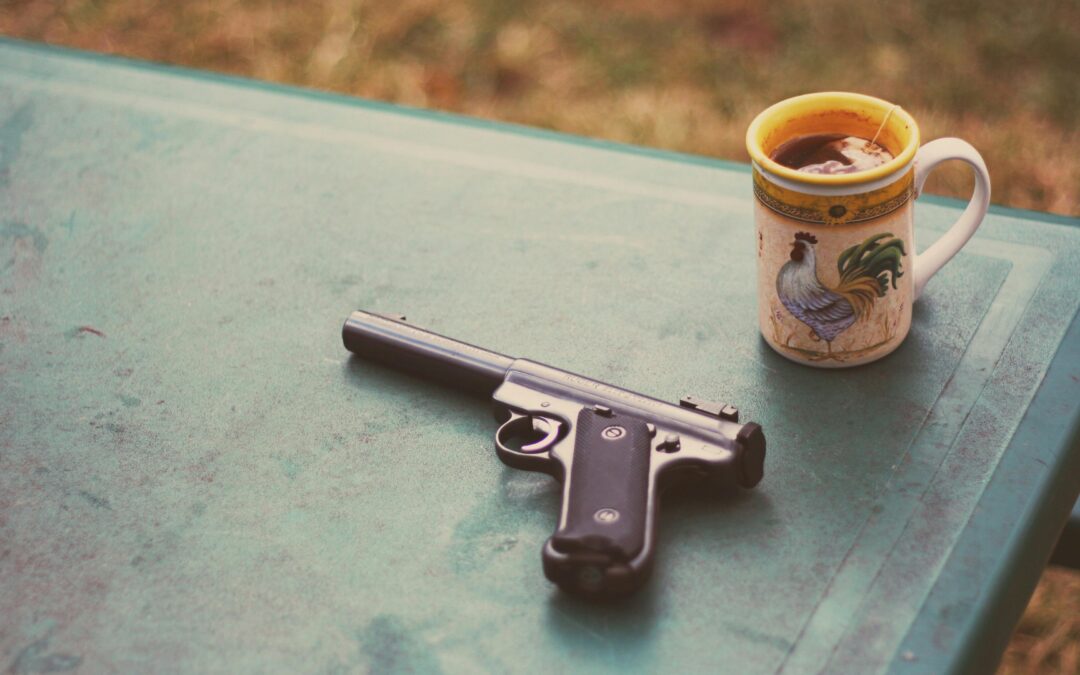Guns, at their core (or should we say “in their barrel”), are fascinating pieces of machinery designed for a singular purpose: to launch a projectile at high speed towards a target–that’s a very verbose way of saying “shoot”. You may consider your self a seasoned gun enthusiast or just a curious individual who wants to learn all about how they work, understanding the mechanics can be both enlightening and important for safe handling. Join Maui Ammo and Gun Supply and let’s dive into the basics of how guns operate.

How do Guns Work: Basic Components of a Gun
When answering the question “how do guns work?” You’ll want to get to know some basic terminology. Let’s start there.
The Barrel
You’ve probably heard of the barrel, it’s one of the more ubiquitous terms thrown around. But do you know what it does? The barrel is a metal tube through which the bullet travels. It’s precision-crafted to ensure the bullet flies straight. The inside of the barrel is often rifled, meaning it has spiral grooves that impart a spin to the bullet, stabilizing it in flight and improving accuracy.
The Action
The action is one of the more exciting parts of a gun; the mechanism is the part that loads, fires, and ejects cartridges. It includes parts like the bolt, hammer, and firing pin. The type of action varies across different firearms, such as bolt-action, lever-action, and semi-automatic.
The Stock
The stock is the part of the gun that the shooter holds and braces against their shoulder (in long guns like rifles and shotguns). It provides stability and control, essential aspects of shooting and control.
The Magazine
The magazine is where ammunition is stored before being fed into the chamber. It can be detachable or fixed and comes in various capacities depending on the firearm.
How a Gun Works When it Fires
Loading
Exactly how do guns work? Well,first, a cartridge (consisting of the bullet, propellant, primer, and casing) is loaded into the chamber. In semi-automatic and automatic firearms, this is done automatically as part of the cycling process. In manual-action guns, the shooter manually loads the cartridge. Which ever type of gun you prefer is up to you, and you can learn more about loading your favorite firearm as you delve further into the gun-world.
When the trigger is pulled, it releases the firing pin, which strikes the primer at the base of the cartridge. This ignites the primer, which in turn ignites the propellant (gunpowder).
Propelling
The burning propellant rapidly produces gas, creating high pressure that forces the bullet out of the cartridge and down the barrel at high speed. The rifling in the barrel makes the bullet spin, which stabilizes it and increases accuracy.
Ejecting
After the bullet is fired, the spent casing is ejected from the gun to make room for the next cartridge. In semi-automatic and automatic firearms, this happens as part of the cycling process. In manual-action firearms, the shooter must eject the casing manually.

Learning About How Guns Work and Safety Considerations
When learning “how do guns work?”, it is crucial to learn about safe handling. Always follow these basic safety rules:
- Treat every gun as if it’s loaded.
- Never point a gun at anything you don’t intend to shoot.
- Keep your finger off the trigger until you’re ready to shoot.
- Know your target and what’s beyond it.
Guns are powerful tools and should always be handled with respect and care. For more detailed information, consider taking a firearm safety course and reading up on gun laws and regulations specific to your area.
To learn more, make sure to contact Maui Ammo and Gun Supply for all your firearm questions and needs.


Recent Comments